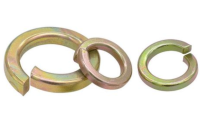Tailoring Spring Settings for Optimal Performance in Pressure Washers
Custom Pressure Washer Spring Adjustment A Guide for Optimal Performance
Pressure washers are invaluable tools for homeowners and professionals alike, providing an efficient means of cleaning surfaces that can accumulate dirt, grime, and other debris over time. However, achieving optimal performance from your pressure washer often requires careful adjustments, particularly with the spring mechanism that governs the pressure output. In this article, we'll delve into the significance of custom pressure washer spring adjustment, the tools you may need, and the steps involved to ensure that your pressure washer runs at its best.
Understanding the Role of the Spring in Pressure Washers
At the heart of every pressure washer is a pump system, which generates the high-pressure water needed for effective cleaning. The spring in this system functions as an integral component in regulating this pressure. When the trigger is activated, water flows through the pump, and the spring helps control the pressure as the water is forced out through the nozzle. A well-adjusted spring ensures that the pressure remains stable and consistent, allowing for optimal cleaning performance.
Why Custom Adjustment is Important
Customizing the spring adjustment is essential for various reasons. First and foremost, not all surfaces require the same pressure for effective cleaning. For instance, delicate surfaces such as wood or painted areas might need a lower pressure to avoid damage, while tougher surfaces like concrete can handle higher pressure. Custom adjustments allow users to tailor the pressure output according to their specific cleaning tasks.
Additionally, improper spring tension can lead to decreased efficiency and damage to the pressure washer. Over time, springs may lose their elasticity or become worn, affecting their ability to maintain the intended pressure. Regular adjustment checks ensure that your washer operates at peak performance, extending its lifespan and reducing the need for repairs.
Tools Needed for Spring Adjustment
Before you begin adjusting the spring on your pressure washer, ensure you have the following tools on hand
1. Socket Wrench or Adjustable Wrench To loosen and tighten the bolts holding the spring in place. 2. Pressure Gauge To measure the pressure output accurately after adjustments are made. 3. Screwdrivers For any additional adjustments that may be necessary on your machine. 4. Protective Gear Always wear safety glasses and gloves when working with pressure washers to protect against any debris or splashing water.
custom pressure washer spring adjustment

Steps for Custom Spring Adjustment
1. Safety First Disconnect the pressure washer from its power source and water supply. Allow it to cool if it has been in use.
2. Locate the Spring Adjustments Open the pressure washer cover to access the pump and locate the spring that you intend to adjust. Identify screws or bolts that secure the spring mechanism.
3. Check the Current Pressure Before making adjustments, use a pressure gauge to check the current pressure level. This will help you gauge the effect of your adjustments.
4. Adjust the Spring Tension Using the socket or adjustable wrench, loosen the bolt or screw holding the spring in place. Gently adjust the tension by either compressing or extending the spring, depending on whether you need to increase or decrease the pressure.
5. Reassemble and Test Once adjusted, reassemble the pressure washer and reconnect it to the water supply. Start the machine and use the pressure gauge to check the new pressure output.
6. Fine-Tune if Necessary If the pressure is still not at the desired level, repeat the adjustment process until optimal performance is achieved.
Conclusion
Custom pressure washer spring adjustment is a crucial maintenance task that can significantly enhance the performance and efficiency of your machine. By understanding how to adjust the spring properly, you can ensure that your pressure washer meets the demands of varying cleaning tasks while extending its operational life. Remember, safety first—always wear appropriate gear and ensure that your machine is disconnected before making any adjustments. With diligence and care, you'll enjoy spotless surfaces and a well-performing pressure washer for years to come.
-
Top Choices for Plasterboard FixingNewsDec.26,2024
-
The Versatility of Specialty WashersNewsDec.26,2024
-
Secure Your ProjectsNewsDec.26,2024
-
Essential Screws for Chipboard Flooring ProjectsNewsDec.26,2024
-
Choosing the Right Drywall ScrewsNewsDec.26,2024
-
Black Phosphate Screws for Superior PerformanceNewsDec.26,2024
-
The Versatile Choice of Nylon Flat Washers for Your NeedsNewsDec.18,2024










